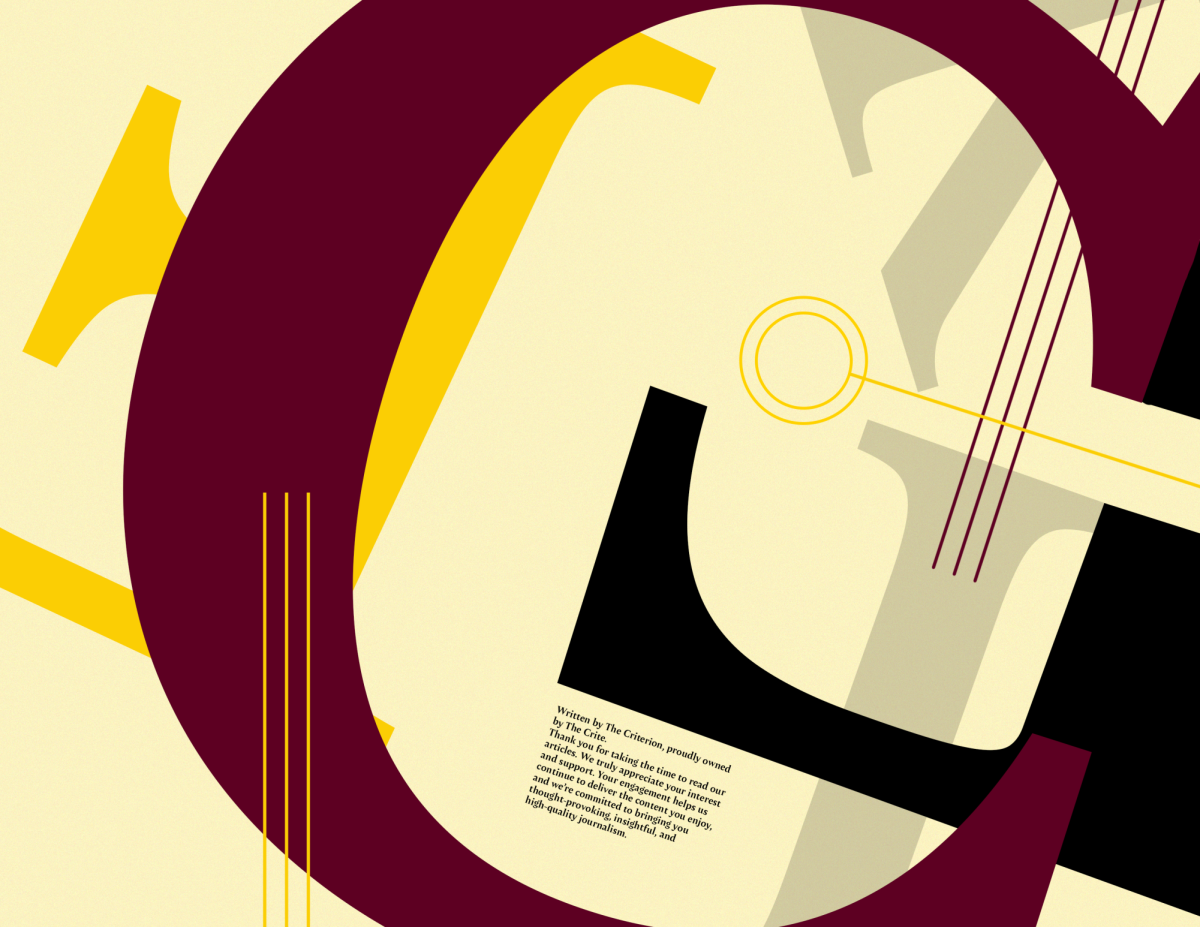by Ashton Collett, Felicia Martinez, Vincent Fronczek
“Bliss Fishing,” the exhibition currently held at the Art Center, is not about fishing. You’re not going to find illustrations or pointers from a fly fishing journal; instead, you’ll be confronted with morality, insects, confusion and fear. The four artists have an informal fraternity that meets together and goes fishing any Tuesday they can.
These artists all share a passion for teaching art, as they all were/are professors at CMU. This show featured works by Araan Schmidt, Joshua Butler, Charles Hardy and Roger McCoy, four friends whose work complemented one another. This show is open until Nov. 12 at the Art Center at 1803 North 7th St. with general admission being $3 and Tuesdays are free admission.
Araan Schmidt featured two large sculptures, the most prominent of which is “Working Surface I.” The sculpture consists of a large, wavy brass form which is bolted on a steel sawhorse. The rugged look of the worktable with its visible welds and raw appearance easily contrasts the look of the pristine, shining structure bolted on top of it.
Upon closer examination, the brass component of the work had intentional cracks carved into the surface. Schmidt showcased his technical skill by combining two different metals (dulled steel and polished brass) to present artwork highlighting contrast.
Joshua Butler exhibited several prints in the show, and many of them showcased natural influences. Insects and flowers featured heavily in his work, but one of his more jarring pieces was titled “Our Primordial Mother.”
This print depicts a woman, who appears to be giving birth, quite literally connected to her child as it moves through the cycle of life; the child then returns to her mouth, where it appears she is inhaling her child to some extent. This print is significantly more intense than most of Butler’s other works which have a more conventional sense of naturality to them.
Charles Hardy, also a printmaker, features a smaller group of prints that dynamically showcase sunken features, shallow eyes and the human condition. Despite this, Hardy still managed to use humor to delve deeper into themes in his work. One example of this is his print “Every Day I Fight Bruce Lee.”
The print features a person kneeling in front of a picture with traditional Chinese characters on them. This could be a metaphor for containing the rage inside of a person, as Bruce Lee is known for the anger he displayed while fighting. Upon speaking to the artist, we learned that Hardy chose to display his work in the back corner, hidden away partially by a wall. While odd, this could be so people would look more closely at his artwork.
Roger McCoy’s large-scale works stand out as you enter the gallery. The artworks, according to McCoy, were inspired by Neo-Dadaists like Robert Rauschenberg and Basquiat. These influences are seen in McCoy’s amalgamation of figures, handwritten numbers, and multicolored canvases that converge into very dark works, both palette-wise and theme-wise.
In the work “To a Higher Consciousness,” the darker colors of the background contrast with the lighter red colors of the hand depicted and the golden colors of the alphabet McCoy painted in. According to the artist, he used materials “ravished by time” in his artwork, and referred to them more as collages of things that others would discard. We can see this in the torn pieces of the canvas attached to the work.
Overall, this is a show you shouldn’t miss. The Art Center presents the work well and the work itself is intriguing. We encourage everyone to attend and hope to see you at future shows.








